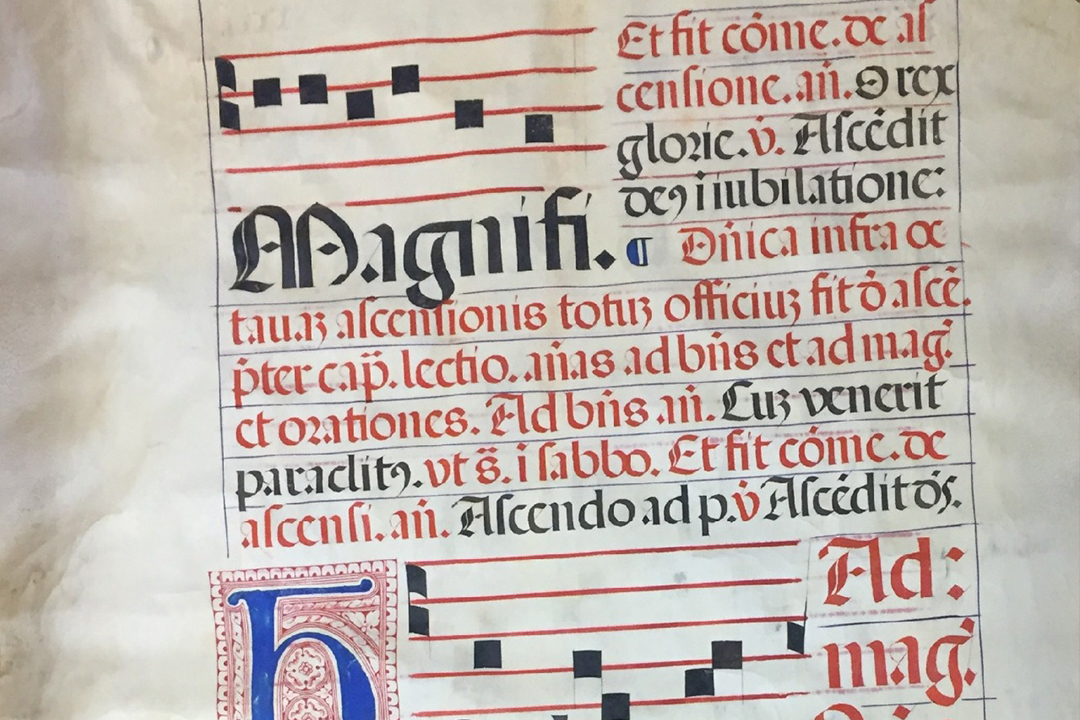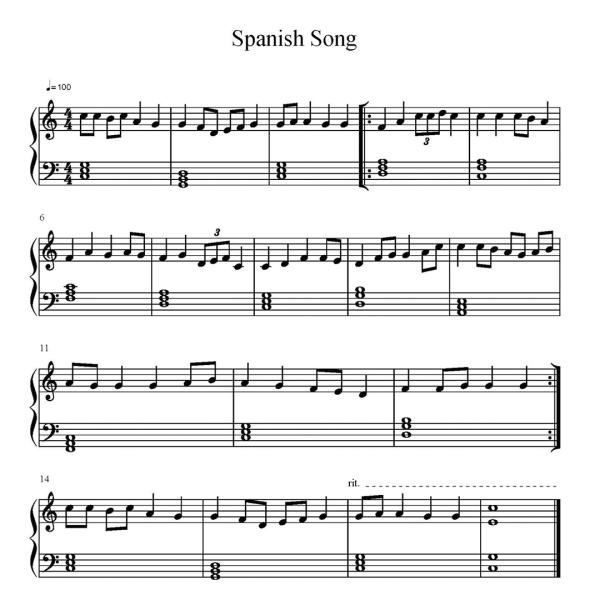Shiyi Lin, BA ‘20, transcribed a sheet of music from a 16th-century Spanish Christian chant, known as an antiphony leaf. She first saw the medieval sheet music when her UW 1020 class visited the GW Libraries Special Collections. This is her reflection on the project.
Transcribed sheet music of the 16th century Spanish antiphonal leaf found in GWU Special Collection
Few weeks ago our Shakespeare class visited Gelman Library Special Collection, where I found an interesting leaf of medieval music, known as an antiphonal leaf. An antiphon in Christian music and ritual is a responsory by a choir or congregation, usually in the form of a Gregorian chant, to a psalm or other text in a religious service or musical work. This leaf was probably part of a larger bound work known as an antiphonary.
It is hard to read the music at first glance, because there are no key signatures, time signatures, and bar lines; it is also scripted in square notation. I did some research and found that this music notation looks very similar to the same as other music written in Spain during the medieval period. It is in square notation and five line staff, a typical feature of Spanish medieval music.
When I transcribed the music, I wrote it in a C major key and the time signature in 4/4. I assumed the two blue lines in the sheet to be a repeat sign and that the square notes that are close together should be played faster than notes that are further away from each other. I also added chords on the lower stave. Since this music sheet might not be the complete version of the song, I composed the last part so that it ends with the tonic chord.



